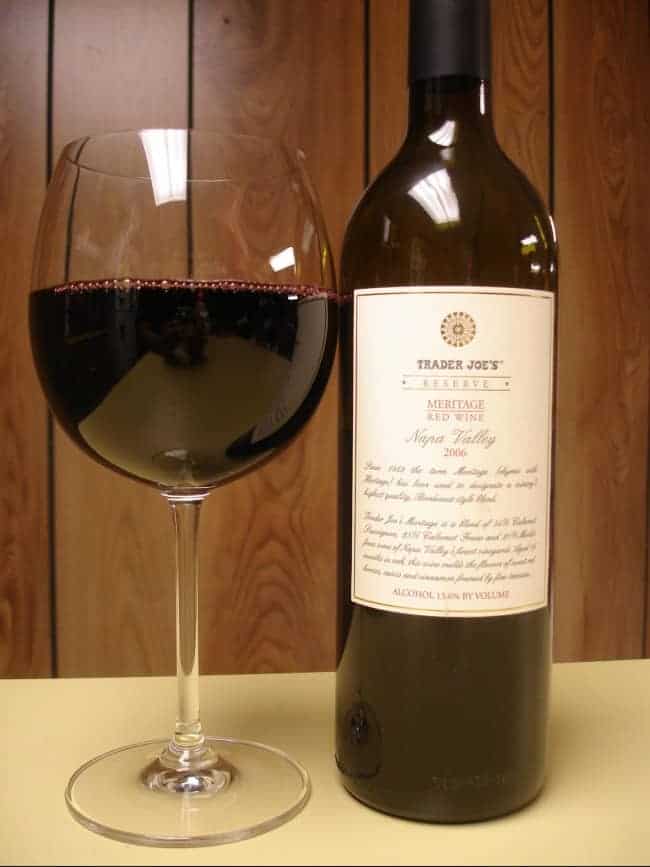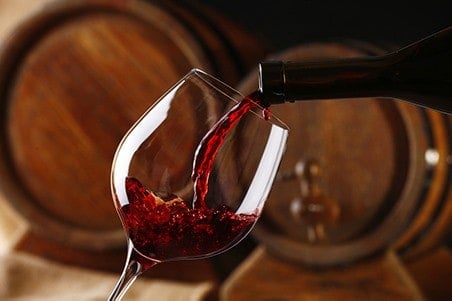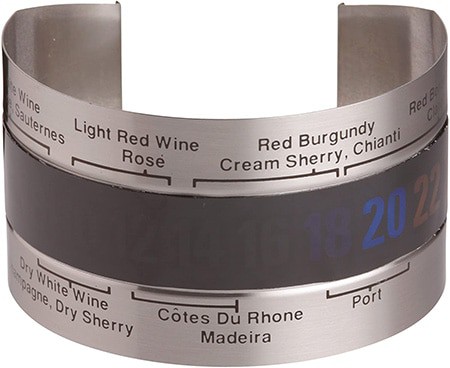Should You Chill Red Wine or Not?
Our deep dive into ideal wine temperatures may throw up a few curveballs. You've been warned!

You must have heard at some point that red wine is best served at room temperature.
The question is whether that is actually true or should red wine be chilled before it’s served?
Rather than speculating, in this article we’re hoping to come up with a conclusive answer on the optimum temperatures at which various wines should be served.
It turns out that the temperature at which you drink your wine can have a huge impact on the overall aroma and taste profile.
Some say that it can have such a big impact that the same wine served at different temperatures can taste like a completely different wine.
That is why it’s so important to serve it at just the right temperature.
As usual, we’ll give you the answer up front, but if you’re curious about knowing the “how and why” please don’t be shy and keep on reading.
What is the Optimal Drinking Temperature for Red Wines?
High Tannin Reds (eg. Cabernet Sauvignon and Shiraz) = 62 - 68 F
Medium Tannin Reds (eg. Pinot Noir and Merlot) = 50 - 60 F
Low Tannin Reds (eg. Beajolais and Gamay types) = 45 - 50 F
Why Drink Chilled Red Wine?
I’m sure you've heard many people say that chilling red wine is basically breaking the law!
Ultimately, the temperature you drink your wine at is all a matter of personal preference.
There are a number of studies that note that we generally drink our red wines too warm. The problem with serving a red wine that is too warm is that the flavor of alcohol will be over-emphasized (unless you are drinking a non alcoholic wine) which ultimately leaves the wine flat and monotonous.
Serving it too cold, on the other hand, restricts the aromas and flavors to the extend where the tannins in the wine become overwhelming.
This will result in the wine becoming very astringent. What a waste that would be to spend good money on a high quality red wine but not enjoying it because it’s served at the wrong temperature.
That’s why it’s so important to get the temperature just right.

The Best Temperature for Drinking Red Wine
The old adage says that red wine should be served at room temperature, and while this may be a good starting point, “room temperature” can mean a lot of different things to a lot of different people.
Serving a red wine room temperature in a cabin during winter time in Alaska will mean something very different than serving a wine in a beach villa near the equator.
The best temperature to drink your wine at will also depend on the type of red wine.
Full bodied red wines will generally have a high tannin content (such as Cabernet Sauvignon) should generally be served warmer than light- to medium-bodied wines that have a lower tannin content.
This is because the colder the wine is, the more the tannins will be emphasized, and therefore the more astringent the wine will become in terms of flavor.
A wine with higher tannins should therefore be served slightly warmer.
This will mask the astringency somewhat so that other aromas and flavors can be released which will have a significant positive impact on your overall taste experience.
Conversely, wines with lower tannin content should be served slightly chilled because there is less risk for the tannins to become overwhelming.
A slightly lower temperature also subdues the flavor of the alcohol somewhat allowing you to more thoroughly enjoy the other elements of the wine.
To sum it up, below are the best temperatures at which to drink your wine:
- Full-Bodied Reds (ie. Cabernet Sauvignon) should ideally be consumed between 62 F to 68 F
- Medium-Bodied Reds (ie. Merlot) should ideally be consumed between 50 F to 60 F
- Light-Bodied Reds (ie. Pinot Noir) should ideally be consumed between 45 F to 50 F

How Can I Tell If My Wine is a Full, Medium, or Light-Bodied Red Wine?
Full Bodied Red Wines (High Tannin) | Medium Bodied Red Wines (Medium Tannin) | Light Bodied Red Wines (Low Tannin) | |||
|---|---|---|---|---|---|
|
|
| |||
|
|
| |||
|
|
| |||
|
|
| |||
|
|
| |||
|
|
| |||
|
| Cell | |||
| Cell | Cell | |||
| Cell | Cell | |||
| Cell | Cell | |||
| Cell | Cell | |||
| Cell | Cell | |||
| Cell | Cell |
So How Do I Get My Wine to the Right Temperature?
Back in the day, two methods were predominantly used to chill red wine to the right temperature.
In medieval Europe, wines would typically be stored in a European castle or in a wine cellar which would have had a temperature of around 55 F to 65 F.
They would be served at these temperatures which is perfect for most wines.
Unfortunately, we don’t have the luxury of castles anymore these days and people that have wine cellars are few and far between.
Nowadays, red wines are typically served at room temperature which in most cases will mean a temperature in the mid-70s F.
This is far too warm for most red wines as the alcohol flavor will overwhelm all of the other taste profiles that are present in a wine.
These days there are basically two ways for ensuring that you drink your red wine at the right temperature.
One of these is to cool or warm your wine just enough to reach the right temperature.
The other is to store your wine at exactly the right temperature so that you can drink it whenever you feel like it.
Option 1: Cool or Warm Your Wine Just the Right Amount Using a Wine Thermometer

The idea here is to cool or warm your wine just enough so that it hits the recommended temperatures as described above.
If you have stored your wine in the fridge you would simply want to take it out and let it warm up enough so that the temperature is just right.
If you have stored it at room temperature you may want to throw it into an ice-bucket quickly to quickly chill it to the recommended temperature.
After you have had the wine at room temperature (in case you stored it in the fridge), or in the ice bucket (in case you stored it at room temperature), for a while, the best way to ensure that it has reached the right temperature is by using a wine thermometer.
These aren’t very expensive, and I would thoroughly recommend one as it can completely elevate your wine tasting experience.
Personally I use the BarCraft Wine Thermometer, because it gives you a reading almost instantaneously (yes, I’m impatient by nature) so you can quickly determine whether your wine requires more cooling or warming.
Once your red wine is at the right temperature, you can start enjoying it immediately.
Option 2: Ensure the Right Wine Storage Temperature Using a Wine Fridge

The second option, which is much pricier, is to purchase a wine fridge to ensure that your wine is stored at the correct temperature.
If you’re an avid wine drinker, or plan to become one in the future, this is is probably a worthwhile investment.
The advantage of this is that your wine will always be stored at the right temperature so that whenever you feel like having a glass you won’t have to bother with cooling it down or warming it up first.
It can make such a difference in the overall experience and taste of the wine.
The reality of option 1 is that it may require a little bit of time to get the wine to the right temperature which is an inconvenience that many don’t have the patience for.
Unfortunately this means that you won’t be enjoying the wine to its full potential.
That’s why I recommend getting a simple wine cooler (especially if you live in a warm climate).
This will allow you to set the temperature just right so that you can get the most out of your wine.
That’s a Wrap…
So.. should red wine be chilled?
To cut a long story short, even red wine should be chilled to bring out the best in flavor and aroma.
Just make sure you know the premium temperature range for your favorite red.
It just depends on which type of wine you have to what extend you should chill it but it is definitely worth the effort.

Great post.
I think the debate over chilling red wine is fascinating. I find that I prefer some red wines to be chilled, but most often, I prefer room temperature (or ever so slightly below). Honestly, I drink nearly everything just below room temperature be in beer, wine or even soda. I find that the cold diminishes the flavor for me and makes whatever I’m drinking less enjoyable.
Still, I won’t tell those who prefer to chill their wine that they are wrong!
In vino veritas,
Vincenzo
Thanks for the note Vincenzo. I agree – to each their own. I think it comes down to approaching it with an open mind at the end of the day and experimenting a little bit to see what suits you best. Beer below room temperature though, that’s certainly the first time I’ve heard of that! I’m intrigued. It must be some higher quality micro-brews that you are referring to?
Useful article. Thanks so much for posting.
I find your article and advise most enlightening. i was of the opinion that some “hot” red wines did not taste right. since the norm was not to chill I switched to white. I am happy to note that your professional advise has given credit to my palette.